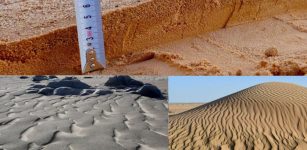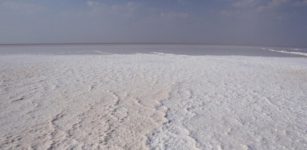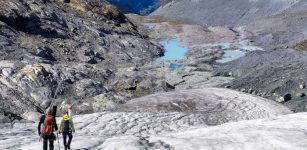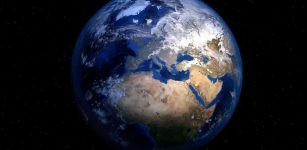Why Does Earth Wobble As It Spins? Scientists Have Identified The Causes
Eddie Gonzales Jr. – MessageToEagle.com – Earth is not a perfect sphere. When it rotates on its spin axis an imaginary line that passes through the North and South Poles. Our planet drifts and wobbles and now scientists know why it happens.
As previously mentioned on MessageToEagle.com, a while back scientists unveiled the most accurate map ever produced of the Earth’s gravity. The map clearly shows our planet is not a perfect sphere. In fact, our planet looks more like a potato. The reason why our planet has this weird shape is because the Earth’s gravity isn’t uniform.
Since 1899, the Earth’s axis of spin has shifted about 34 feet (10.5 meters). These spin-axis movements are scientifically referred to as “polar motion.”
It is known that humans are responsible for some of the wobble in Earth’s spin, but there are also other causes.
Using observational and model-based data spanning the entire 20th century, NASA scientists have for the first time identified three broadly-categorized processes responsible for this drift – contemporary mass loss primarily in Greenland, glacial rebound, and mantle convection.
“The traditional explanation is that one process, glacial rebound, is responsible for this motion of Earth’s spin axis. But recently, many researchers have speculated that other processes could have potentially large effects on it as well,” said first author Surendra Adhikari of NASA’s Jet Propulsion Laboratory in Pasadena, California in a press statement.
“We assembled models for a suite of processes that are thought to be important for driving the motion of the spin axis. We identified not one but three sets of processes that are crucial — and melting of the global cryosphere (especially Greenland) over the course of the 20th century is one of them.”
In general, the redistribution of mass on and within Earth — like changes to land, ice sheets, oceans and mantle flow — affects the planet’s rotation. As temperatures increased throughout the 20thcentury, Greenland’s ice mass decreased. In fact, a total of about 7,500 gigatons — the weight of more than 20 million Empire State Buildings — of Greenland’s ice melted into the ocean during this time period. This makes Greenland one of the top contributors of mass being transferred to the oceans, causing sea level to rise and, consequently, a drift in Earth’s spin axis.
See also:
Unusual Glacial Engineering Plan Could Limit Sea-Level Rise – Will It Work?
Secrets Of Armorica – Britain Was Formed From The Collision Of Three Ancient Continental Land Masses
Sahara Can Be Green Again Thanks To New Wind And Solar Technology
While ice melt is occurring in other places (like Antarctica), Greenland’s location makes it a more significant contributor to polar motion.
“There is a geometrical effect that if you have a mass that is 45 degrees from the North Pole — which Greenland is — or from the South Pole (like Patagonian glaciers), it will have a bigger impact on shifting Earth’s spin axis than a mass that is right near the Pole,” said coauthor Eric Ivins, also of JPL.
The observed direction of polar motion, shown as a light blue line, compared with the sum (pink line) of the influence of Greenland ice loss (blue), postglacial rebound (yellow) and deep mantle convection (red). The contribution of mantle convection is highly uncertain. Credit: NASA/ JPL-Caltech
Previous studies identified glacial rebound as the key contributor to long-term polar motion. And what is glacial rebound? During the last ice age, heavy glaciers depressed Earth’s surface much like a mattress depresses when you sit on it. As that ice melts, or is removed, the land slowly rises back to its original position. In the new study, which relied heavily on a statistical analysis of such rebound, scientists figured out that glacial rebound is likely to be responsible for only about a third of the polar drift in the 20thcentury.
The authors argue that mantle convection makes up the final third. Mantle convection is responsible for the movement of tectonic plates on Earth’s surface. It is basically the circulation of material in the mantle caused by heat from Earth’s core. Ivins describes it as similar to a pot of soup placed on the stove. As the pot, or mantle, heats, the pieces of the soup begin to rise and fall, essentially forming a vertical circulation pattern — just like the rocks moving through Earth’s mantle.
With these three broad contributors identified, scientists can distinguish mass changes and polar motion caused by long-term Earth processes over which we have little control from those caused by climate change. They now know that if Greenland’s ice loss accelerates, polar motion likely will, too.
Written by Eddie Gonzales Jr. – MessageToEagle.com Staff Writer












